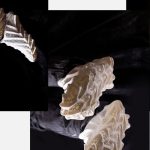tungsten Disulfide Helps Light to Twist in Quantum Computing
- Details
- Category: Tungsten’s News
- Published on Wednesday, 22 September 2021 22:29
Researchers at Nagoya University have discovered that tungsten disulfide can help switch the direction of light at room temperature, which could be the future of quantum computing. Scientists have already generated circularly polarized light and controlled its direction, thereby getting rid of bulky magnets or very low temperatures.
The results of this study, by researchers at Nagoya University in Japan and colleagues, show promise for developing materials and device methods that can be used for optical quantum information processing.
Light particles called photons have interesting properties that can be exploited to store and transmit data and show great promise for use in quantum computing.
For this to happen, information is first stored in electrons that then interact with matter to generate data-carrying photons. Information can be encoded in the direction of an electron’s spin, just as it is stored in the form of 0 and 1 in the ‘bits’ of computers. Data can also be stored when electrons occupy ‘valleys’ found in the energy bands they move between while they orbit an atom. When these electrons interact with specific light-emitting materials, they generate twisting ‘chiral’ ‘valley-polarized light’, which shows potential for storing large amounts of data.
![]()
To achieve this, information is first stored in electrons, which then interact with matter to produce photons carrying data. The information can be encoded in the direction of the electron's spin, just as it is stored as " bits" in a computer in the form of 0 and 1. The data is stored simultaneously as the electrons occupy the "valleys" in the energy bands they are in as they orbit around the atom. When these electrons interact with specific light emitting materials, they produce distorted "chiral" "valley polarized light", which shows the potential for storing large amounts of data.
So far, however, scientists have only managed to use magnets and very low temperatures to produce this type of circularly polarized light, making widespread use of the technique impractical. A team of scientists led by Nagoya University applied physicists Taishi Takenobu and Jiang Pu developed a room-temperature, electrically controlled method to generate this chiral valley-bottom polarized light.
First, they grew a single layer of tungsten disulfide semiconductor on a sapphire substrate and covered it with a thin film of ionic gel. Electrodes were placed at both ends of the device and a small voltage was applied. This created an electric field and eventually produced light.
The team discovered that chiral light can be observed between -193°C and room temperature, where part of the device's sapphire substrate is naturally strained due to the synthesis process. However, it could only be produced from the strain-free zone at much lower temperatures. The scientists concluded that the strain plays a key role in generating room-temperature valley polarized light.
The researchers then fabricated a bending stage on which they placed a tungsten disulfide device on a plastic substrate. They used the bending platform to apply strain to their material, drive a current in the same direction as the strain, and produce valley-polarized light at room temperature. An electric field was applied to the material to move the chiral light from one direction to the other.
"The monolayer semiconductor demonstrates for the first time a light-emitting device that can electrify and switch circularly polarized light at room temperature," Takenobu said.
The team will next further optimize their device with the aim of developing a practical chiral light source. The research, entitled: " Room-Temperature Chiral Light-Emitting Diode Based on Strained Monolayer Semiconductors," was published in Advanced Materials.
- < Prev
- Next >
Link to this article:Tungsten Disulfide Helps Light to Twist in Quantum Computing
Reprint Statement: If there are no special instructions, all articles on this site are original. Please indicate the source for reprinting:Tungusten,Thanks!^^

